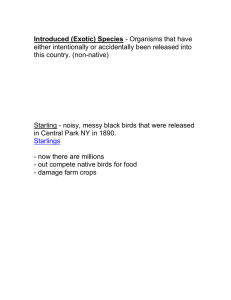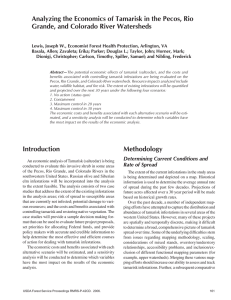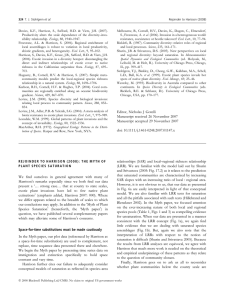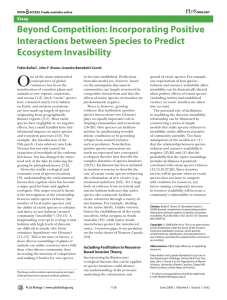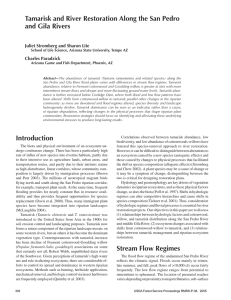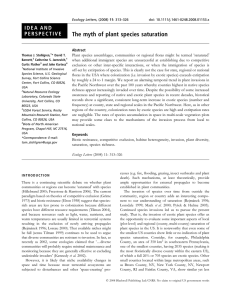Exotic Species and Sustainable Ecosystem Management
advertisement
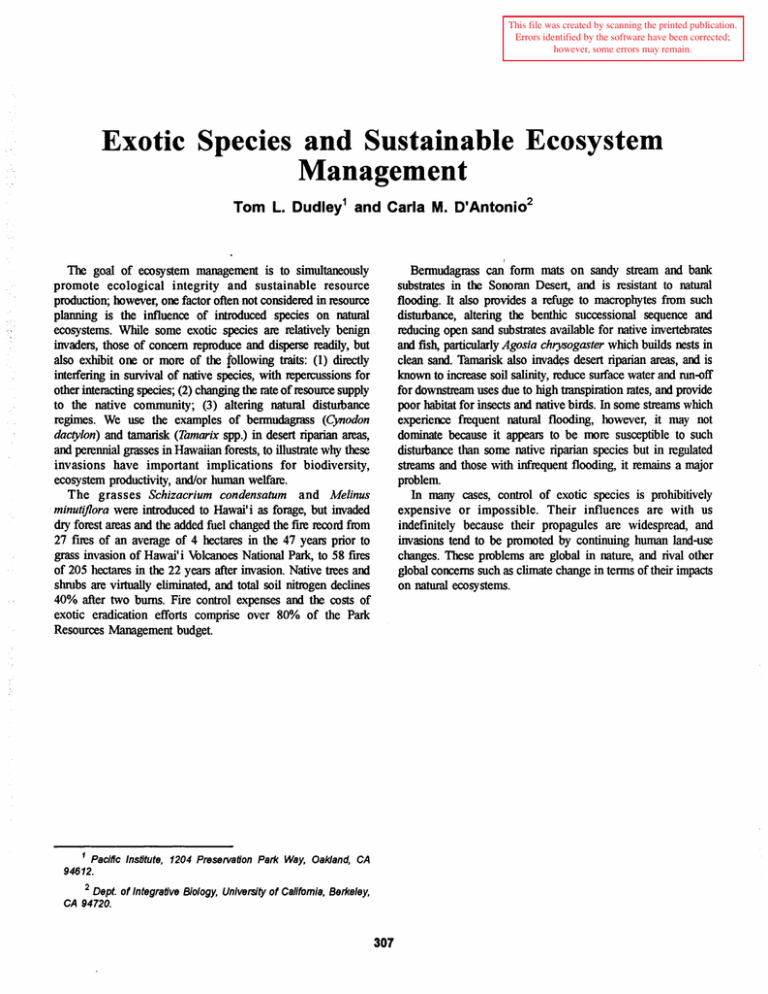
This file was created by scanning the printed publication. Errors identified by the software have been corrected; however, some errors may remain. Exotic Species and Sustainable Ecosystem Management Tom L. Oudley 1 and Carla M. O'Antonio2 I Bennudagrass can fonn mats on sandy stream and bank substrates in the Sonoran Desert, and is resistant to natural flooding. It also provides a refuge to macrophytes from such distmbance, altering the benthic successional sequence and reducing open sand substrates available for native invertebrates and fish, particularly Agosia chrysogaster which builds nests in clean sand. Tamarisk also invades desert riparian areas, and is known to increase soil salinity, reduce sutface water and run-off for downstream uses due to high transpiration rates, and provide poor habitat for insects and native birds. In some streams which experience frequent naturn1 flooding, however, it may not dominate because it appears to be more susceptible to such distutbance than some native riparian species but in regulated streams and those with infrequent flooding, it remains a major problem. In many cases, control of exotic species is prohibitively expensive or impossible. Their influences are with us indefinitely because their propagules are widespread, and invasions tend to be promoted by continuing human land-use changes. These problems are global in nature, and rival other global concerns such as climate change in terms of their impacts on naturnl ecosystems. The goal of ecosystem management is to simultaneously promote ecological integrity and sustainable resource production; however, one factor often not considered in resource pIanning is the influence of introduced species on natural ecosystems. While some exotic species are relatively benign invaders, those of concern reproduce and disperse readily, but also exlubit one or more of the following traits: (1) directly intetfering in SUIVival of native species, with repercussions for other interacting species; (2) changing the rate of resource supply to the native community; (3) altering natural distutbance regimes. We use the examples of bennudagrass (Cynodon dactylon) and tamarisk (Tamarix spp.) in desert riparian areas, and perennial grasses in Hawaiian forests, to illustrate why these invasions have important implications for biodiversity, ecosystem productivity, and/or human welfare. The grasses Schizacrium condensatum and Melinus minutiflora were introduced to Hawaii i as forage, but invaded dry forest areas and the added fuel changed the fire record from 27 fIreS of an average of 4 hectares in the 47 years prior to grass invasion of Hawaii i Volcanoes National Park, to 58 fires of 205 hectares in the 22 years after invasion. Native trees and shrubs are virtually eliminated, and total soil nitrogen declines 40% after two bums. Fire control expenses and the costs of exotic eradication efforts comprise over 80% of the Park Resources Management budget. 1 Pacific Institute, 1204 Preservation Park Way, Oakland, CA 94612. 2 Dept. of Integrative Biology, University of Califomia, Berkeley, CA 94720. 307



